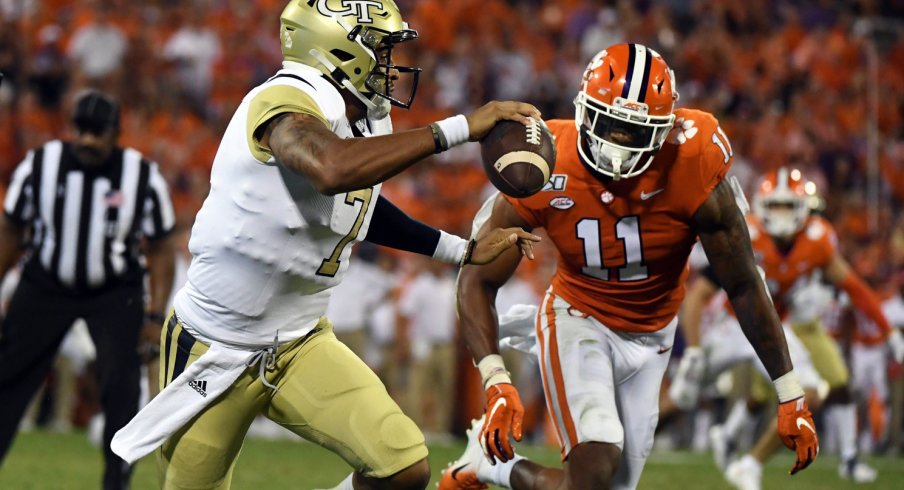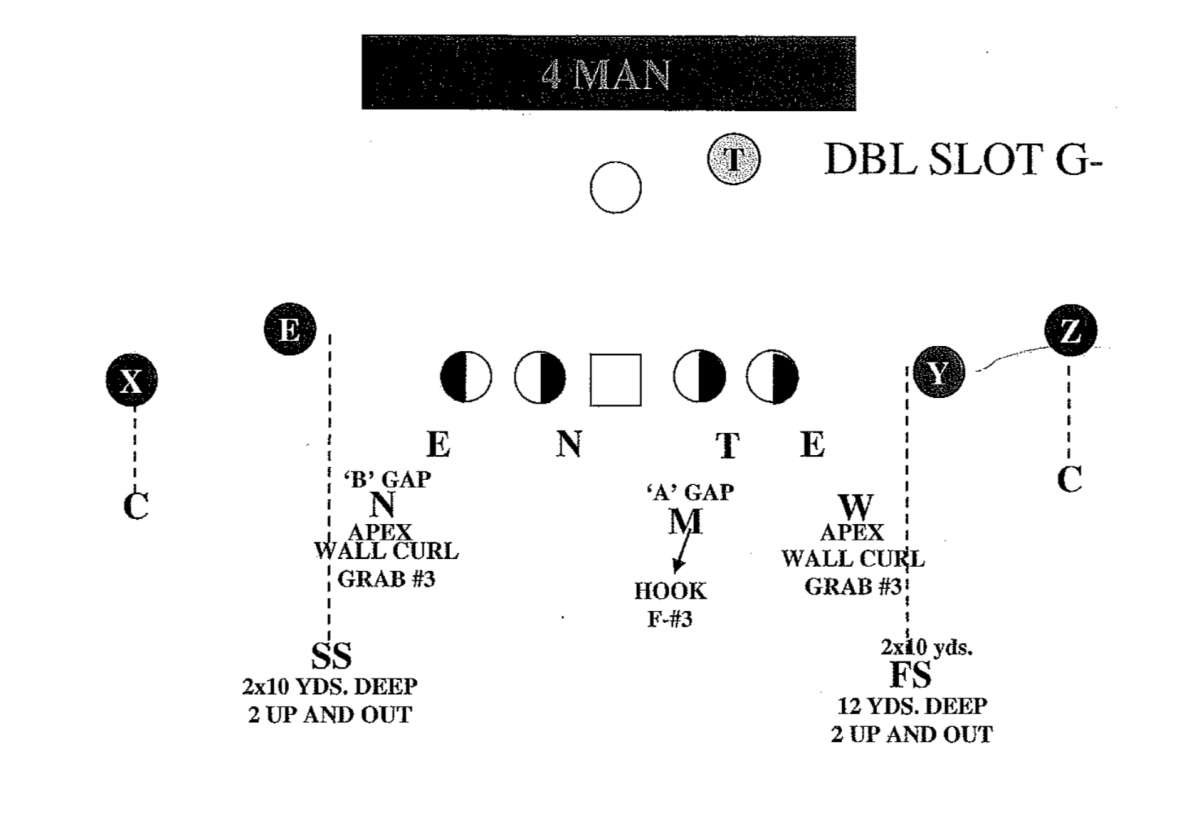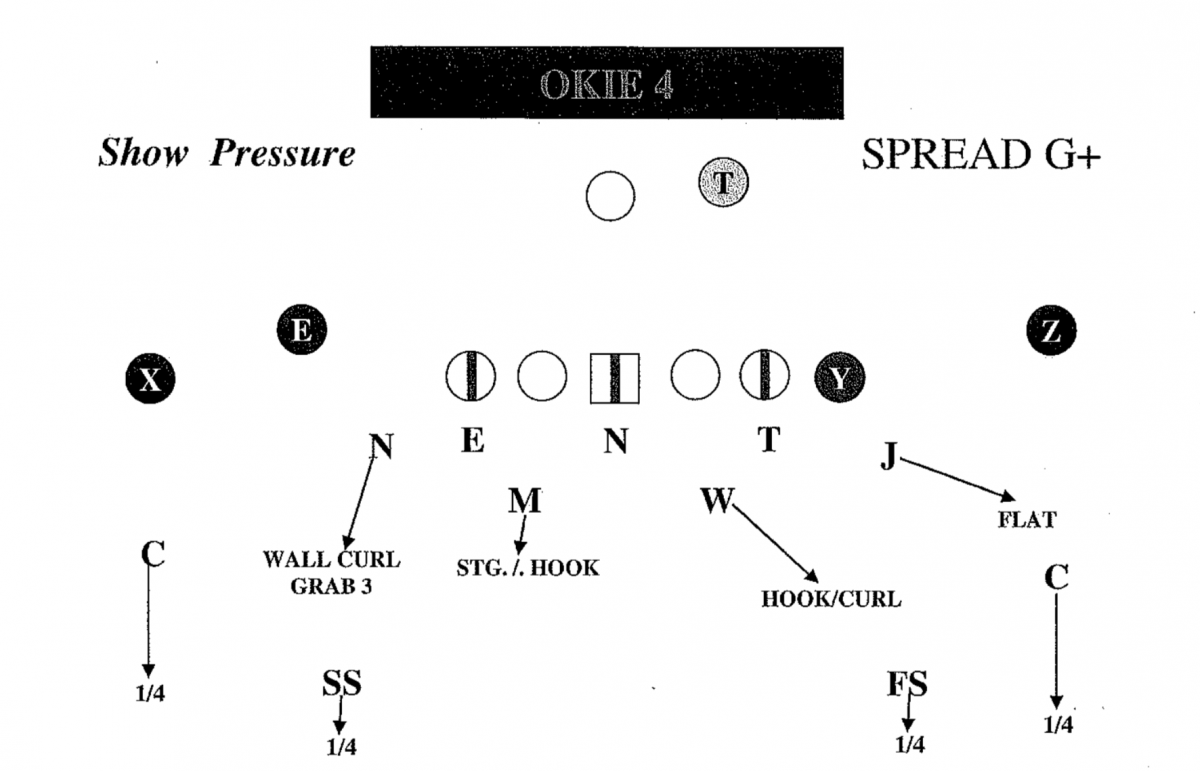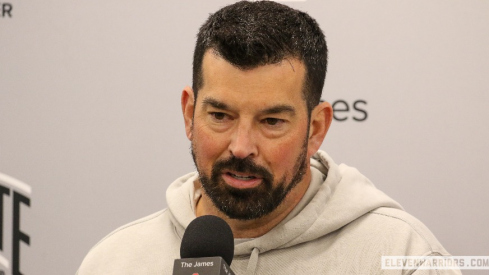Ohio State lands the nation's No. 1 safety in the 2026 class as Blaine Bradford commits to the Buckeyes.
“Historically over the last decade or more, Venables has been one of the best defensive coordinators in the country. They continue to do really good on defense. A lot of good players, a lot of good talent over there. The back end is as good as we'll see. They have a lot of skill.” - Ryan Day
Since 2012, the Clemson Tigers have established themselves within the top echelon of college football. This emergence has been driven largely by the talents of offensive playmakers like Tahj Boyd, DeAndre Hopkins, Sammy Watkins, Deshaun Watson, and current star QB Trevor Lawrence just to name a few. But Dabo Swinney’s program hasn’t built itself as purely a point-scoring powerhouse, rather, they’ve consistently fielded some of the nation’s stingiest defenses.
Led by one of the deepest and most talented lines in the nation, the Tigers raised the CFP trophy in two of the past three seasons. Coordinator Brent Venables became of the sport's most well-known (and paid) assistants in the process, with both his boss and his players quick to credit him for the unit’s preparation.
This season, following the departure of all four starters up front, the vaunted coach has been forced to rebuild his system with the talent at hand. Luckily for him, one of the best athletes in the nation leads a back-seven that is both deep and experienced.
Isaiah Simmons was a last-minute addition to the 2014 Clemson recruiting class, and a questionable one at that. At 6’4” but just 190 lbs, the long jumper had excelled in his high school career as a wide receiver and safety, but left evaluators wondering what position would best suit him at the next level.
Today, Simmons may be a Butkus Award-winner but he does far more than play linebacker for Venables. The redshirt junior leads the team with 91 tackles, 14 for loss, and seven sacks, while rarely comes off the field, appearing on a number of special team units in addition to playing virtually every snap for the Tiger defense.
He’s shown up on most highlight clips for plays like this, bowling over a running back on his way to sacking the quarterback:
…or this one, in which he blows up an RPO with his best Dikembe Mutombo impression:
But Simmons’ value doesn’t come as an elite pass rusher or defender in coverage. On the contrary, it’s his ability to do many things at a high level that allows Venables to change the entire shape of his unit without substituting.
Given the aforementioned surplus of talent in the Clemson secondary, Venables has redesigned his entire 4-3 scheme to be played from a three-man front with two inside linebackers. From there, Simmons’ alignment can turn the Tigers’ formation from a 4-2-5 to a 3-3-5 or even a 3-2-6 dime package.
"He's our centerpiece," Tigers safety Tanner Muse said of Simmons to ESPN. "You never really know what he's doing -- spying the quarterback, blitzing off the edge, covering a guy in the slot. In today's football, he's big enough to fill up holes; and when they go five wides, he can cover his man. He's special."
The 3-2-6 package is certainly the most unique, with Simmons lining up as a third safety and showing an ability to play centerfielder in zone coverage:
The formation mimics similar sets seen from Iowa State and others in the Big 12 over the past two seasons, as it provides a conservative shell to defend against the pass, but allows the middle safety to mirror the ball carrier on running plays and often go unblocked on his path to the ball.
No longer with a lanky frame, Simmons is more than willing and capable to create a collision in these situations, making the Tigers’ five-man front far more formidable against the run.
"You can't really work around him because he's everywhere," one opposing coach told ESPN.com. "It felt like he was playing defensive line, linebacker and safety all in the same play. He's a problem. He wrecks any matchups you think you might be able to create. He chews up space in like two strides."
Venables knows he can’t sit in that same 3-2-6 look or just sit in zone coverage and hope teams won’t find open seams. Rather, he plays the part of the aggressor, unveiling a barrage of blitzes that many coaches would only call in clear passing situations.
“They do a great job of changing up looks,” Ryan Day said of his CFP semifinal opponent earlier this month. “Three down, four down, a lot of pressure, try to get you off schedule."
But with this three-man front now its base look, the Clemson defense uses deception and confusion to create penetration, often only sending only four or five rushers in order to keep the defense from getting beat deep should they not get to the QB. When Simmons is one of those rushing, however, that isn’t often a problem.
“From the film I've seen they've run a ton of different looks, a ton of different blitzes and I'm gonna have to be prepared for all of it,” said Ohio State center Josh Myers. “So it's going to put a lot of pressure on me but to be honest with you, they're all looks that I've seen before. There hasn't been a whole lot that we haven't seen this season. We've had so much stuff thrown at us, which is beneficial.”
This aggression is nothing new for Venables, as his 2017 playbook featured 17 different blitz schemes from this three-man look alone, and there’s no doubt he’s added to that number by now. But he also uses the mere threat of a blitz to his advantage, using ‘simulated pressure’ to drop multiple defenders in coverage with the hops of creating a convoluted picture for the quarterback.
Against good quarterbacks, though, such simulated pressure places a great deal of weight on the secondary to hold up in coverage. Though the safety above, Muse, is a senior captain capable of lowering the boom at 6’3” and 230 lbs, Virginia clearly targeted him as a liability in man-coverage.
While the Tigers don’t play a ton of straight man-to-man, they rely heavily on pattern-matching coverage, employing both zone-match and man-match styles. The two are often confused for one another but as former 11W Film Study contributor Jonathan Stephanson describes them:
Clemson's Man-Match Quarters coverageIn man match coverages, both the inline and detached receivers are generally matched up like pure man, but eligible receivers in the backfield like a tailback, fullback or sniffer (tight end) are distributed based on their release.
...
In a zone match coverage, the defender's eyes and technique are tied into reading the receiver breaks and distributing the routes accordingly. That's it.
Don't guard grass, guard players.
Clemson's Zone-Match Quarters coverage from a three-man 'Okie' front...
Receivers can break three ways: inside, outside or vertical. In most zone coverages, the easiest and most effective way to pattern match is read the release of the No. 2 receiver (second-most inside). His break will determine the defender's eye progression and technique. This technique requires more teaching and reps but is MUCH more effective at eliminating holes and throwing windows.
Venables has been a leader in employing both tactics and continues to do so today. As a result, opponents have begun using these same coverage principles against the Tigers, forcing defenders like Muse to cover quicker receivers out of the slot instead of allowing the Clemson cornerbacks to always pick them up.
For as good of an athlete as he is, Simmons isn't immune from these tactics as well, especially when playing a deep safety role. Texas A&M clearly tried to test him in their early-season matchup but failed to connect on the open deep routes.
Exposing the seams in match coverage has proven to be a particular strength of Day and his coaching staff, using motion and alignment to create mismatches in favor of his team. The chess match between Day and Venables will certainly be fun to watch, as the duo will most certainly have numerous wrinkles up their sleeves.
But while the Tiger will gladly engage in a pass-happy contest that places the burden on their secondary, the Buckeyes' biggest opportunity is on the ground. Though Clemson statistically features a top-10 rushing defense, Ohio State will likely try to establish its physical ground game with J.K. Dobbins, as the interior trio of center Josh Myers and guards Jonah Jackson and Wyatt Davis will try to wear down the undersized Clemson front.
The Tiger linebackers may focus on filling interior gaps and knife through the Buckeyes' mid-zone blocking, but Simmons will be relied upon to come up from his middle safety spot to make tackles. Though he has a remarkable ability to close on the ball, Simmons can be caught up in the wash when runners cut back, as he's forced to go over the traffic in front of him.
The easiest way to neutralize such an athletic and aggressive defender is by reading him in the option game. While the Buckeyes have been reluctant to use Justin Fields as a runner, they shouldn't hesitate to use his arm on quick reliefs in the form of arrow routes (as seen below) or through the screen game when Simmons lines up near the line of scrimmage.
While fans may focus on the matchups between Justin Fields versus Trevor Lawrence, Tee Higgins against Jeff Okudah, or Chase Young and Jackson Carman, the back-and-forth between Day and Venables may well be the most important in this game.
Day has made a living off making his team rush to the line of scrimmage before pausing and looking to him for adjustments, but there's no doubt Venables will be prepared. Both units will use pre-snap movement and personnel to disguise their plans, and tempo will surely play a factor as well.
If the Buckeyes are able to move the football on this heralded Clemson defense, however, it likely won't be because of the scheme. Ohio State's goal should be to wear down the Tigers with a physical ground game, which comes down to technique and execution far more than any play calls themselves.





